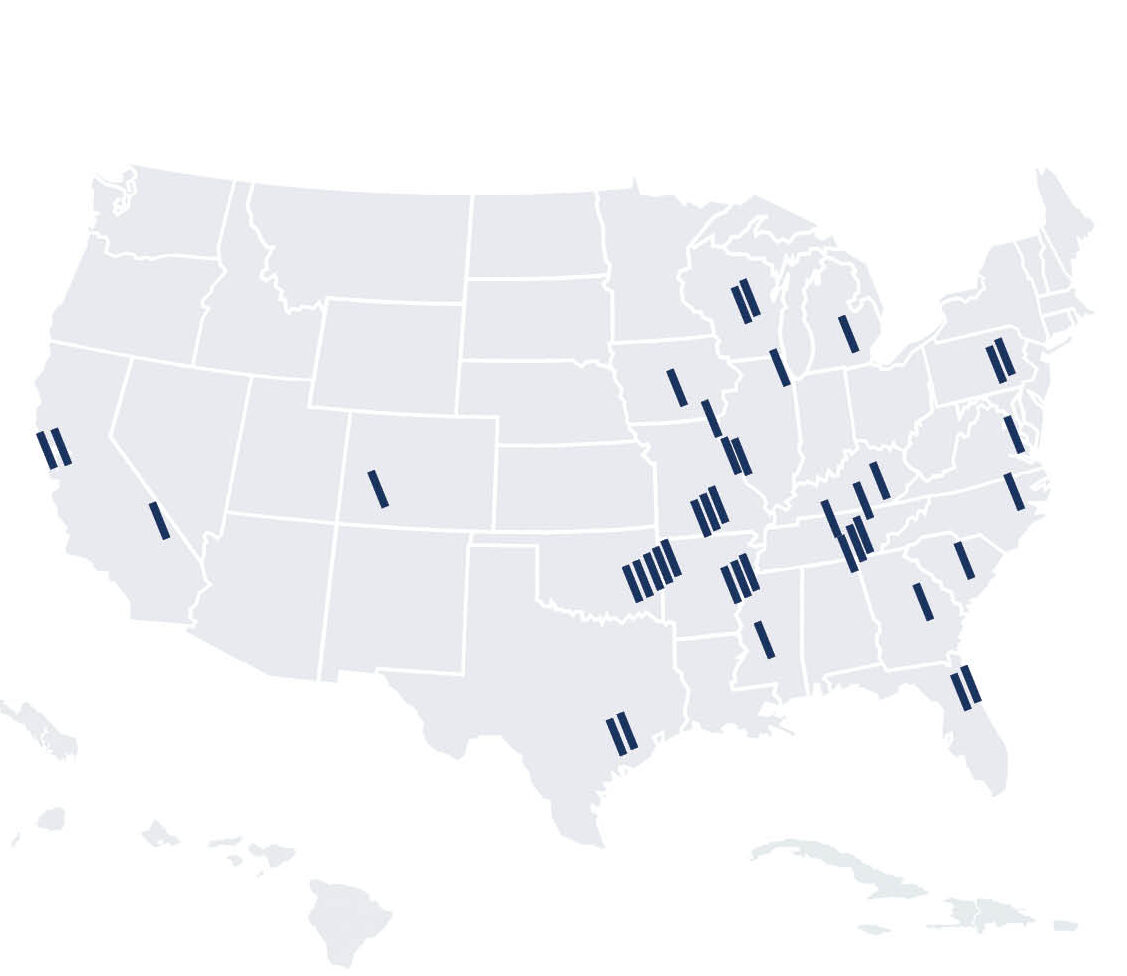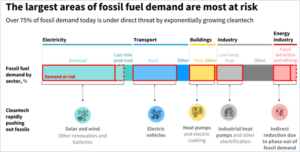Part IV: An All-Electric Future
Everything You Need To Know About How Electricity Works ...
... but may have been too embarrassed to ask
- Carbon
- ESG + Corporate Sustainability
- Energy
Practices Engaged

An All-Electric Future
Part IV of IV: Some good news

Welcome to a 4-part series where our Operational Carbon Technical Lead and Licensed Engineer, Ilana Cember, dives into:“(Almost) Everything You Wanted to Know About Electricity But Are Embarrassed to Ask”Understanding the basics of electricity generation, distribution, purchasing, greenhouse gas emissions, and the utility grids is key to understanding how we change any of those to keep our global commitment and meet the Paris Climate Accord. We will go into the “why” for each of these topics as they are covered. TOPICS WE WILL COVER
Part IV: Some Good NewsWHY?Climate doomerism is a luxury we cannot afford. (xxxv) From Rebecca Solnit: Proclaiming something’s defeat contributes to it. It’s a form of sabotage. This is as true of the climate movement as anything else – in fact, it is bedevilled with defeatists and doomsayers. What motivates us to act is a sense of possibility within uncertainty – that the outcome is not yet fully determined and our actions may matter in shaping it. If we can recognise that we don’t know what will happen, that the future does not yet exist but is being made in the present, then we can be moved to participate in making that future. Uninformed and misplaced hope leads to fruitless effort and disappointment. One of the complexities of climate change activism is that there is much to hope for, but within the parameters of the possible. For example, we can with swift and heroic effort stabilise global temperature, scientists tell us – but that will not stop the ice sheets melting and the seas rising for centuries to come (though it will help with the pace and extent of that melting). We can campaign for proven solutions and honest innovations, and not be taken in by the distractions, delaying tactics and false solutions now being pushed by the same interests who once brought us climate denial. To hope is to risk. It’s to take a chance on losing. It’s also to take a chance on winning, and you can’t win if you don’t try (even though the campaign may be won without you). We who have materially safe and comfortable lives, and who are part of societies that contribute the lion’s share of greenhouse gases, do not have the right to surrender on behalf of others. We have the obligation to act in solidarity with them. This begins by recognising that the future has not yet been decided, because we are deciding it now. (xxxvi) To that end, we have the technologies today to reduce 75% of the carbon emissions from current fossil fuel systems. (xxxv) This includes utility-scale renewable energy for carbon-free electricity and electric vehicles (EVs) for road transportation, in addition to the previously discussed heat pumps. Figure 27. The Largest Areas of Fossil Fuel Demand Are Most At Risk(xxxi)
We have likely already hit the 1.5°C threshold (xxxix), but we have the power to prevent further global warming. Figure 28. We Can Stop Further Global Warming (xxxv)
In ConclusionElectrification can be an in-depth process, but the solutions are straightforward. That said, the increase in demand of many components is outpacing the supply while manufacturing spurred by the Inflation Reduction Act and Bipartisan Infrastructure Law catches up. If your electrical service is not large enough to handle the increased load with new electric equipment, starting procurement now is crucial to meeting 2030 carbon commitments. Transformer lead times are currently more than 2 years. Here are some other opportunities to consider:
Regardless of where you are in your journey, from starting your greenhouse gas inventory to decarbonization planning to project implementation, Brightworks Sustainability can assist at any stage. Request a Proposal Written by Operational Carbon Technical Lead Ilana Cember, PE, CEM
|


Starwood Hotels & Resorts
1 Hotel Hanalei Bay Luxury Resort
Starwood Hotels & Resorts
1 Hotel Hanalei Bay Luxury Resort
Princeville, HI
Brightworks provided LEED certification management and energy services to support Starwood Hotels with the major renovation and rebranding of Kauai’s Princeville Hotel into a flagship 1 Hotel resort focused on sustainable hospitality and wellness. Brightworks collaborated with the design and construction team to incorporate innovative strategies that will save energy and water, improve operations, and protect local ecosystems. Brightworks also delivered comprehensive energy modeling services, which allowed the project team to identify energy conservation measures and evaluate options.
Practices Engaged:
Sustainable Built Environments
Industry Sectors:
Hotel
Building Types:
Hotels & Resorts


Gerding Edlen
5 MLK Apartments
Gerding Edlen
5 MLK Apartments
Portland, OR
This biophilically-designed tower achieved LEED Gold and Fitwel 1 Star certification while also featuring a resiliency program. The building offers 100,000 square feet of offices on lower floors and 220 residential units with landscaped terraces above.
Practices Engaged:
Sustainable Built Environments, Healthier Built Environments
Industry Sectors:
Residential
Building Types:
Luxury Residential


City of Portland
Case Study
City of Portland
Case Study
Practices Engaged:
Healthier Built Environments
Industry Sectors:
Corporate, Government, State & Local
Building Types:
Historic Buildings
Read more


ABB
North American GreenCRREM Assessments
ABB
North American GreenCRREM Assessments
Arkansas, California, Florida, Georgia, Michican, Missouri, Mississippi, North Carolina, New Jersey, New Mexico, Oklahoma, Pennsylvania, South Carolina, Tennessee, Texas, Virginia, Wisconsin, West Virginia
ABB is a global leader in industrial technology. Across 17 states, Brightworks conducted sustainability assessments on more than 50 buildings in ABB's North American portfolio, including manufacturing, office, and warehousing facilities. An extensive report providing a baseline assessment for each site helped ABB prioritize energy efficiency measures, budget for carbon reduction efforts, and calculate ROI as part of its GreenCRREM program.
Practices Engaged:
Sustainable Built Environments, Carbon, Energy
Industry Sectors:
Corporate, Manufacturing


Salesforce
Case Study
Salesforce
Case Study
This letter to the industry highlights the urgent need to address embodied carbon in MEP/IT/AV systems. While operational emissions have seen progress, this embodied carbon remains a challenge. This article reveals insights to guide the industry toward a 50% reduction by 2030 to stay on track for meeting net-zero carbon targets for 2050.
Practices Engaged:
ESG + Corporate Sustainability, Sustainable Built Environments, Carbon, Materials
Read more


AI Meets Lower Carbon Concrete
AI Meets Lower Carbon Concrete
Concrete accounts for 8% of global GHG emissions, which is more than every country except the US and China. Lower carbon concrete is a critical climate solution, but designing it isn’t simple. While AI offers promise, experts warn of its limitations in capturing real-world variables. This post explores why human expertise still leads the way, and how integrative strategies are reshaping concrete’s future.
Practices Engaged:
Materials
Read more

-
U.S. GSA Diplomatic Security OfficeDiplomatic Security Office | Seattle, WA
-
U.S. Social Security Administration OfficeVan Nuys Office | CA

